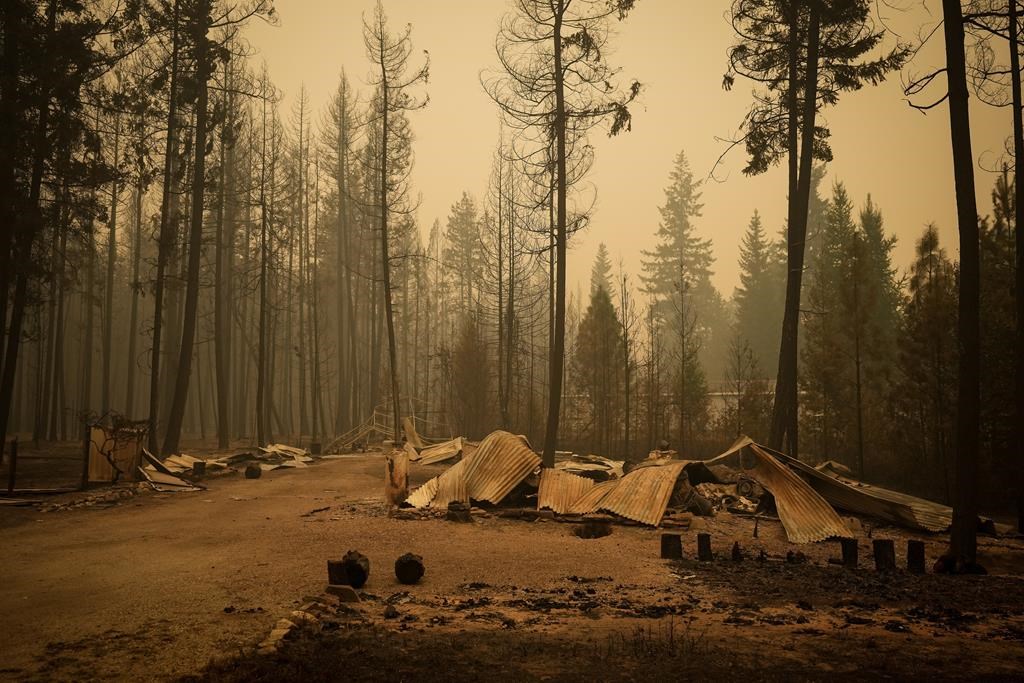Study says buffers, fire resistant materials could slash wildfire risks to residences

Posted December 17, 2023 5:00 am.
A new study says Canadian homeowners and communities can slash wildfire risks to buildings if they start taking steps like cutting buffer zones and using fire resistant construction materials.
The study released Sunday by the Intact Centre on Climate Adaptation at the University of Waterloo is noting that the 2023 wildfire season saw wildfire losses that shattered previous records set in 1995, with an area about one quarter the land mass of Manitoba going up in flames.
The report, titled “Ahead of the flames,” says Canadians living in forested and grassland regions need to follow “well-tested actions” that can reduce the risk of their home burning “by up to 75 per cent.”
The document includes two infographics, with images showing practical actions for homeowners and communities to take.
They include calls for homeowners to store wood away from the house, remove shrubs and other flammable material near the foundation and take down trees within 10 metres of the building.
More complex steps include installing fire-rated roofing made from asphalt, fibre cement or metal, which can limit the potential for embers to ignite a roof.
The study also advocates for steps that communities can take, such as removing tree branches close to power lines, incorporating 30-metre buffer zones into community design, and ensuring adequate water supply for firefighting.
The centre’s research estimates that in areas at high risk of wildfire, communities could save $34 for every dollar invested in fire-resistant construction choices, and $14 for every dollar of retrofitting of buildings and facilities to be more fire resistant.
The study found 60 per cent of Canadian communities are vulnerable to wildfire due to their proximity to forests and grasslands.
It says wildfire risk in these communities is “escalating due to expanding urban development, lack of nationally accepted building standards to safeguard against wildfire, the accumulation of flammable vegetation adjacent to structures, and an increase in the fuel surrounding communities as a consequence of 100 years of fire suppression.”
Meanwhile, it says climate change is playing a bigger role because it is lengthening the annual number of days when wildfires can occur.
“According to historical records, current wildfire seasons start roughly one week earlier and end one week later than 70 years ago,” the study notes.
“Scientists project that by the end of the century, fire weather season will be even longer, increasing on average by 30 days a year, but will vary across the country, with western Canada facing a 50 per cent increase of hot and dry days, and eastern Canada a 200 to 300 per cent increase.”
Blair Feltmate, the centre’s director, said the report is aimed at helping Canadians meet the targets set out in the federal government’s National Adaptation Strategy, which calls for communities in high-risk zones to “develop wildfire community prevention and mitigation plans by 2030, with up to 15 per cent implemented by 2028.”








